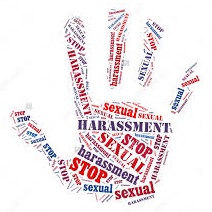*Mandated Reporter Training: Knowing Your Role in the Protection of Children*
This three-hour certified program covers:
- A general overview of child abuse
- Warning signs of abuse
- Requirements of being a mandated reporter
- Steps to reporting a suspicion of child abuse
*Sexual Assault: Understand the Issue*
This program provides information about the following topics:
- Myths and facts about sexual assault
- Different types of assault including acquaintance and date rape
- Date rape drugs, their effects, and how they’re administered
- How to respond to a disclosure of sexual assault
*Sexual Harassment in the Workplace*
Through interactive discussion, role play, and sample scenarios, participants learn to define sexual harassment and recognize its impact.
Discussion of specific workplace situations (such as quid pro quo and hostile work environments) allow participants to identify situations in which sexual harassment might occur.
The program also includes tips for preventing sexual harassment and what to do should harassment occur in the workplace.
*Personal Trauma*
Designed for professionals whose consumers may experience or have experienced a traumatic event, presenters use PowerPoint and discussion to look at different ways a person can experience trauma and the possible long and short term effects.
Positive and negative supports are covered as well as tips for helping a person through a period of trauma.
*Healthcare Screening for Sexual Assault*
Developed with nursing staff in mind, this training covers the following topics:
- Reactions a sexual assault victims may have
- Why it is important to screen for sexual assault
- What to do if a patient affirms a history of sexual assault
The S.A.V.E. (Screen, Ask, Validate, Evaluate) screening tool is used to assist staff in understanding how to help their patients receive the counseling and care they need.
*Keeping Safe at Home and Away*
Interactive discussion and an activity using Crime Clock statistics allow participants to assess their risks for being a victim of a crime.
The program gives steps an individual can take at home and in the community to help reduce the risk of becoming a victim. Risk reduction steps are tailored to the specific facility / population requesting the program.
